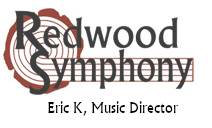William Walton
Viola Concerto
William Walton’s Viola Concerto puts the lie to the assumption that a composer must be able to play an instrument to truly understand it. Walton, the son of a choirmaster, was a singer first and never really mastered performance of any instrument. Yet his understanding of the viola’s musical characteristics — its deep, soulful sound and introspective nature — is evident from this concerto, one of the major solo works for the instrument.
Walton was in his late 20s when he wrote the concerto, and it is one of his first works as a mature composer. After singing and studying music at Oxford from 1912 to 1918, Walton left the university without a degree and was taken in by the wealthy Sitwell family. Under their patronage he composed his first popular piece, Façade (1922), a setting of instrumental music combined with Edith Sitwell’s poetry, followed by a comic overture, Portismouth Point (1926). The music world took notice of the young composer, and in 1928 conductor Thomas Beecham suggested Walton write a concerto for violist Lionel Tertis.
Walton, who was a great admirer of Prokofiev, responded with a work that was influenced by the Russian composer’s Violin Concerto No. 1 in its combination of lyricism and modern harmonies. Tertis, however, did not appreciate its “modernist excesses” and rejected it. So violist and composer Paul Hindemith premiered the piece in London in October 1929, to moderate success. Tertis later performed the piece as well, explaining “I had not learnt to appreciate Walton’s style.” By 1960 Walton felt a need to reorchestrate the work, dropping some woodwinds and brass, adding a harp, and assigning some themes to different instruments. Though he did not withdraw the earlier version, he expressed a preference for the later one, and it is this version that is performed in today’s concert.
The first movement, Andante comodo, begins with a lyrical melody in the viola that suggests both major and minor harmonies. The second theme, viola above a pizzicato accompaniment, is more restless, leading to a forceful climax punctuated by the brass. The recapitulation finds the opening theme now played by oboe and flute, with a viola obbligato in counterpoint, and the section ends in hushed tones.
The second movement, Vivo, con molto preciso, is a brief, dizzying scherzo. The viola trades fast, rhythmic figures with the orchestra, until the brass introduce a second, no less energetic theme. Throughout the movement, Walton breaks up the melodies with sudden offbeat accents and shifts of meter that keep the energy high until the final flourish.
A solo bassoon introduces the triplet-heavy first theme of the final movement, Allegro moderato. Both the solo viola and various sections of the orchestra take it up, until the viola introduces a new, more plaintive theme. A fast, almost furious interlude leads to the final expressive motif, under which Walton includes segments of the first theme as an ostinato. The final fugue is a tour de force of compositional planning, including portions of all three themes, then ending with an epilogue in which the soloist returns to a melody from the Andante, while a bass clarinet (originally the cellos in Walton’s earlier version) plays the first theme from this Allegro underneath. The piece ends quietly, once again contrasting both major and minor harmonies, and focusing on the viola’s greatest strength: its heartfelt, contemplative quality.
June 10, 2001
